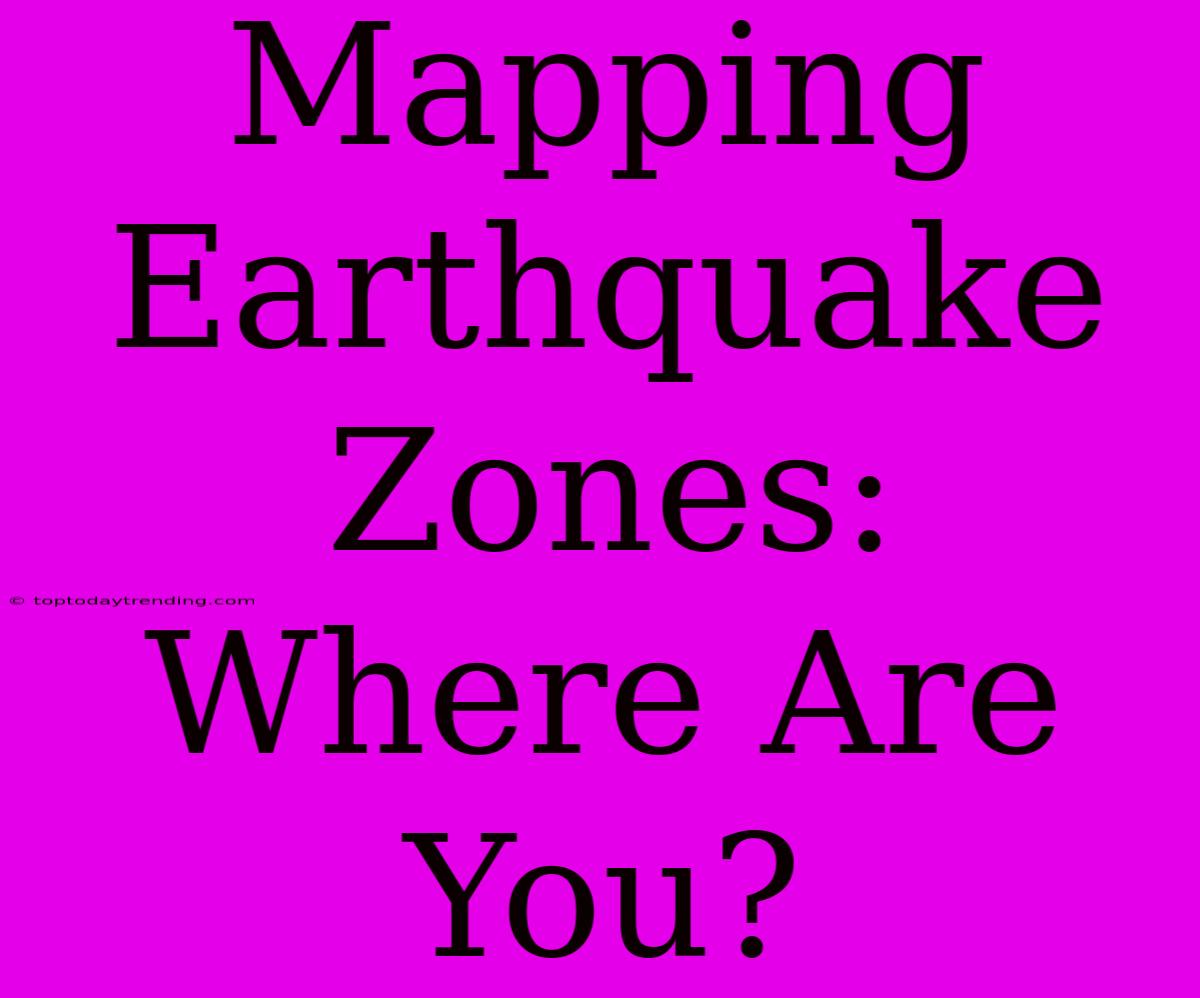Mapping Earthquake Zones: Where Are You?
Earthquakes, those sudden and powerful tremors that shake our planet, are a constant reminder of the dynamic nature of our Earth's crust. Understanding where these seismic events occur is crucial for mitigating their impact on human life and infrastructure. Mapping earthquake zones is the cornerstone of this understanding, providing valuable insights into areas at higher risk and informing disaster preparedness strategies.
The Earth's Tectonic Plates and Earthquakes
The Earth's surface is not a monolithic whole but is composed of tectonic plates, giant slabs of rock constantly shifting and interacting. These interactions can create zones of high seismic activity where earthquakes are more frequent and intense.
Major Earthquake Zones:
- Ring of Fire: This horseshoe-shaped zone encircling the Pacific Ocean accounts for roughly 90% of the world's earthquakes. It's characterized by subduction zones, where one plate dives beneath another, generating intense seismic activity.
- Alpine-Himalayan Belt: Stretching from the Mediterranean Sea to Southeast Asia, this belt is another major earthquake-prone zone. The collision of the Eurasian and African plates, along with the Indian subcontinent, creates tremendous stress, leading to earthquakes.
- Mid-Atlantic Ridge: This underwater mountain range is a divergent plate boundary where new ocean floor is created. As the plates move apart, earthquakes occur along the ridge.
Understanding Seismic Risk
Mapping earthquake zones goes beyond identifying areas of tectonic activity. It delves into seismic risk assessment, which considers not only the likelihood of an earthquake but also its potential impact on society.
Key Factors in Seismic Risk Assessment:
- Earthquake Frequency and Magnitude: Historical data and geological studies help determine the frequency and intensity of past earthquakes in a region.
- Population Density: Areas with high population density are more vulnerable to earthquake impacts, as more people are at risk.
- Building Codes and Infrastructure: The resilience of buildings and infrastructure significantly influences the extent of damage caused by an earthquake.
- Social and Economic Vulnerability: Factors like poverty, access to healthcare, and communication systems play a role in the aftermath of an earthquake.
The Importance of Earthquake Zone Maps
Earthquake zone maps are crucial for:
- Disaster Preparedness: They guide governments, communities, and individuals in developing earthquake-resistant buildings, evacuation plans, and emergency response strategies.
- Building Codes: They inform building codes to ensure structures can withstand seismic forces, minimizing damage and protecting lives.
- Insurance and Risk Assessment: Maps help insurance companies assess risks and develop appropriate insurance policies for earthquake-prone areas.
- Urban Planning: They assist in planning urban development, considering seismic hazards and minimizing potential damage to vital infrastructure.
Staying Safe in Earthquake Zones
Whether you live in a high-risk zone or not, it's essential to be prepared for earthquakes.
Here are some tips:
- Learn about earthquake hazards in your area.
- Secure heavy objects and furniture.
- Develop an evacuation plan and practice it regularly.
- Have a disaster preparedness kit with essential supplies.
- Stay informed about earthquake warnings and advisories.
By understanding earthquake zones and taking necessary precautions, we can minimize the impact of these natural disasters and protect ourselves and our communities.

